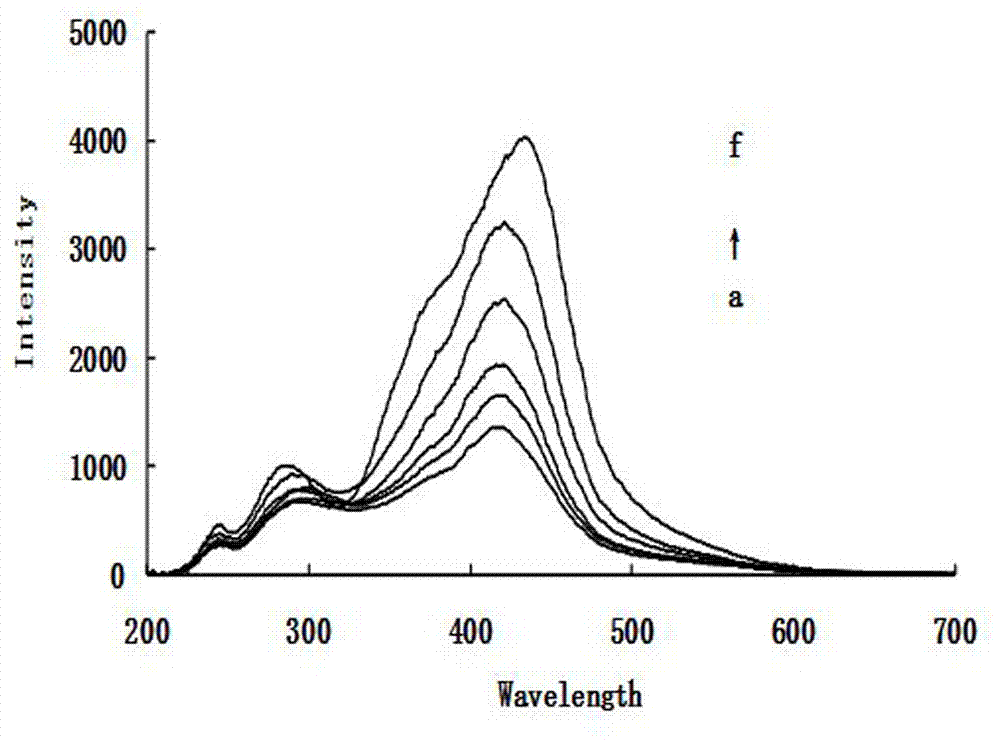Resonance scattering spectrometry method for determining NH<4+> by using sodium tetraphenylborate ligand for adjusting and controlling nano-silver catalytic activity
A technology of resonance scattering and sodium tetraphenylborate, which is applied in the field of analytical chemistry, can solve the problems of long analysis process, cumbersome method, and inability to measure ammonium root, and achieve the effect of high sensitivity and simple method
- Summary
- Abstract
- Description
- Claims
- Application Information
AI Technical Summary
Problems solved by technology
Method used
Image
Examples
Embodiment
[0022] A Resonance Scattering Spectrometric Determination of NH Using Nano-Silver Ligands to Regulate Catalytic Activity 4 + method, including the following steps:
[0023] (1) Prepare a known concentration of NH 4 + Standard solution system: Add 25 μL, 150 μL, 300 μL, 400 μL, 500 μL of 10 μmol / L NH 4 + Then add 15μL 0.1mmol / L nano silver, 500μL 10μmol / L sodium tetraphenylborate solution, 50μL 0.3mol / L glucose, 150μL 1mmol / L AgNO 3 React with 25μL 0.5mol / L NaOH solution in a water bath at 60°C for 6 minutes, shake well, then cool to room temperature with ice water, add 100μL 1mol / L NaCl, and dilute to 2.0mL with twice distilled water;
[0024] (2) Prepare blank control solution system: use the method of step (1) without adding NH 4 + Standard solution to prepare blank control solution system;
[0025] (3) get the NH prepared by steps (1), (2) respectively 4 + The standard solution system and the blank control solution system were poured into a quartz cuvette, and on ...
PUM
 Login to View More
Login to View More Abstract
Description
Claims
Application Information
 Login to View More
Login to View More - R&D
- Intellectual Property
- Life Sciences
- Materials
- Tech Scout
- Unparalleled Data Quality
- Higher Quality Content
- 60% Fewer Hallucinations
Browse by: Latest US Patents, China's latest patents, Technical Efficacy Thesaurus, Application Domain, Technology Topic, Popular Technical Reports.
© 2025 PatSnap. All rights reserved.Legal|Privacy policy|Modern Slavery Act Transparency Statement|Sitemap|About US| Contact US: help@patsnap.com

